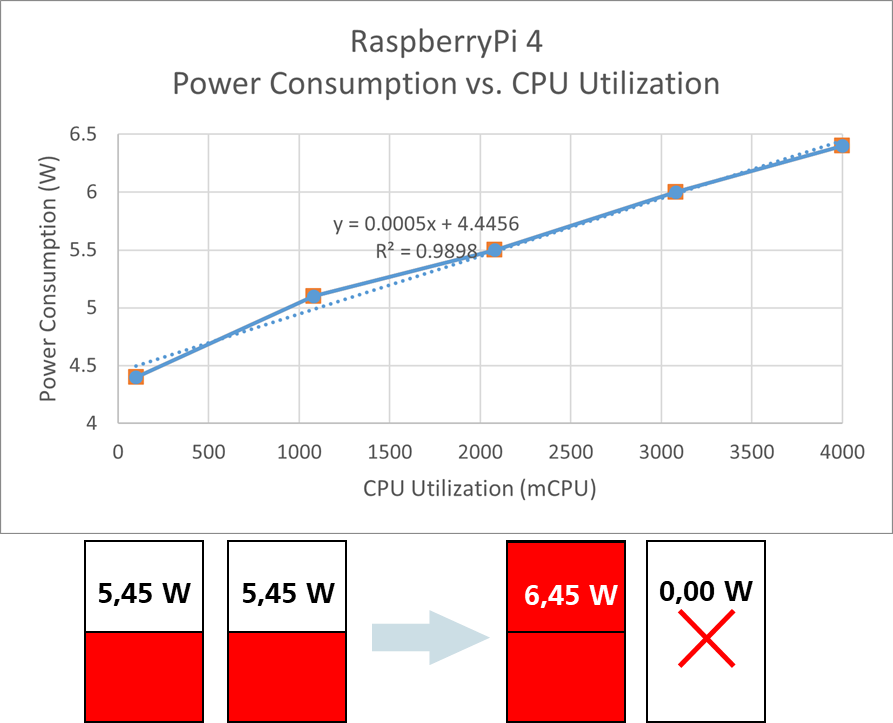Fraunhofer IIS – In this tech blog, »distributed systems« are defined as interconnected processor systems that have comparable performance and resource requirements to a Raspberry Pi. Such systems are used in the radio access network of the 5G mobile communications standard and in distributed control systems in industrial automation technology.
The key question is how energy can be saved with this type of networked embedded system. The savings potential becomes apparent when one of these networked components operates in partial load mode rather than full load mode. In this case, it is less efficient in terms of energy consumption. This is because the energy consumption of this component is made up of a static part and a dynamic part depending on the current output. Although maximum power consumption is seen under full load, the ratio of useful power to static power is significantly better than when the processor is running at half load. The aim of energy-efficient distribution is to save energy through the clever dynamic placement of containers on different networked nodes and the possibility of switching them off. The following illustration shows the basic principle of saving energy using containers and energy-efficient orchestration. Care is taken to ensure that all systems operate as close as possible to full load. Software on systems under partial load is shifted to reduce the load on the system. Idle systems are switched off.
Die zentrale Frage ist, wie man mit dieser Art von vernetzten Embedded Systemen Energie sparen kann. Das Sparpotenzial zeigt sich, wenn eine dieser vernetzten Komponenten nicht im Volllastbetrieb, sondern im Teillastbetrieb arbeitet. In diesem Fall besitzt sie einen schlechteren Wirkungsgrad bei der Energieaufnahme. Dies liegt daran, dass sich die Energieaufnahme dieser Komponente aus einem statischen Anteil und einem dynamischen Teil je nach aktueller Leistung zusammensetzt. Unter Volllast sieht man zwar eine maximale Leistungsaufnahme, aber das Verhältnis von Nutzleistung zur statischen Leistung ist deutlich besser als bei einem Betrieb mit halber Prozessorlast. Das Ziel einer energieeffizienten Verteilung ist es, durch eine geschickte dynamische Platzierung von Containern auf verschiedenen vernetzten Knoten und die Möglichkeit einer Abschaltung Energie einzusparen.
Nachfolgende Abbildung zeigt das Grundprinzip der Energieeinsparung durch Nutzung von Containern und einer energieeffizienten Orchestrierung. Dabei wird darauf geachtet, dass alle Systeme möglichst nahe an der Volllast arbeiten. Software auf Systemen in Teillast wird verschoben, um das System zu entlasten. Systeme im Leerlauf werden abgeschaltet.

The upper part of the figure shows the energy consumption of the system at different utilization levels. The utilization is determined in milli-CPU (mCPU). 1000 mCPU means that one processor core out of a possible four is fully utilized; at 4000 mCPU all cores are fully utilized. The lower section of the figure shows two different distribution scenarios with two Raspberry PIs. On the left, both components are half utilized with one application each. Each component consumes 5.45 watts, i.e. a total of 10.9 watts. On the right, both applications are running on one Raspberry PI, while the second unused embedded system is switched off. In this constellation, 6.45 watts of power are consumed. The saving is 4.45 watts.
